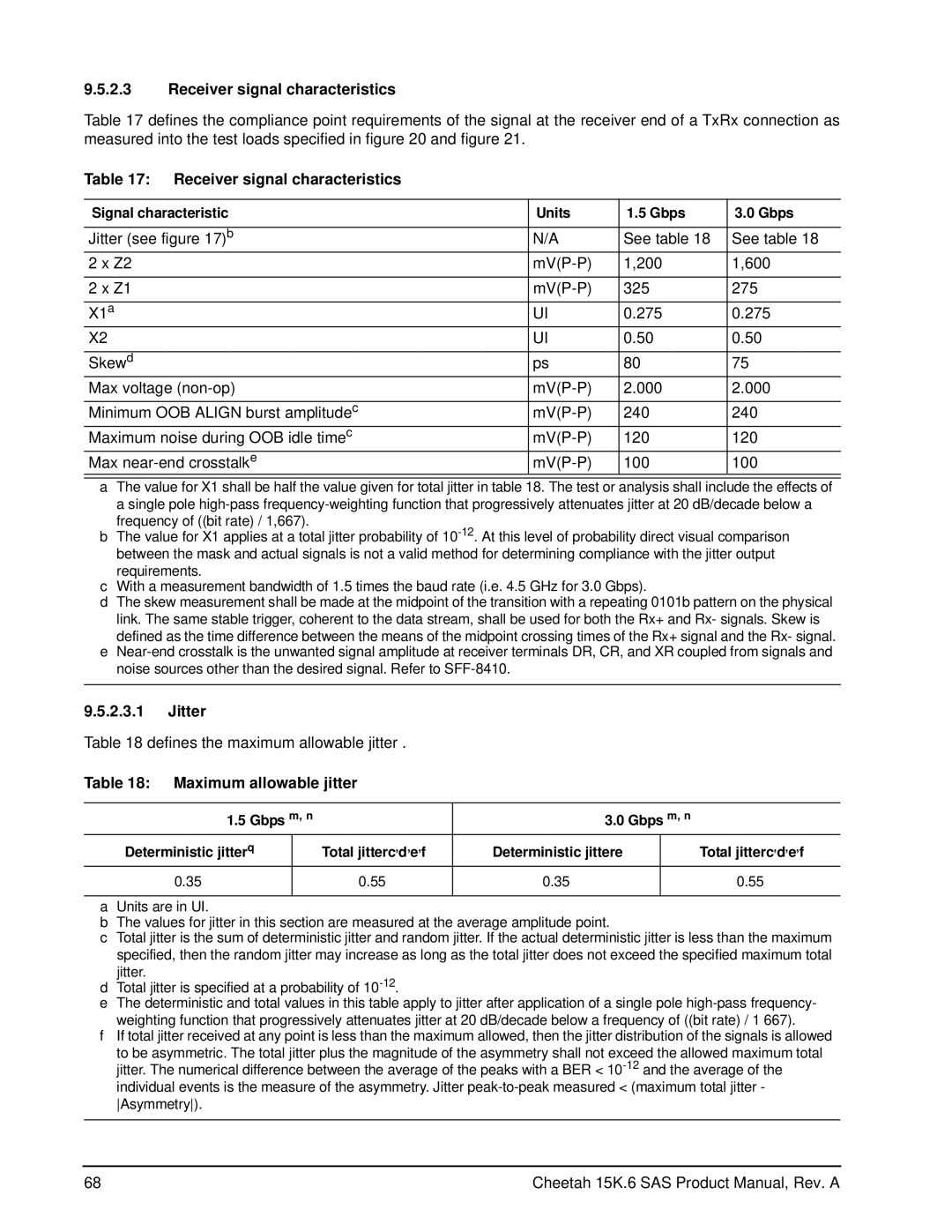
9.5.2.3Receiver signal characteristics
Table 17 defines the compliance point requirements of the signal at the receiver end of a TxRx connection as measured into the test loads specified in figure 20 and figure 21.
Table 17: Receiver signal characteristics
Signal characteristic | Units | 1.5 Gbps | 3.0 Gbps |
|
|
|
|
Jitter (see figure 17)b | N/A | See table 18 | See table 18 |
2 x Z2 | 1,200 | 1,600 | |
|
|
|
|
2 x Z1 | 325 | 275 | |
|
|
|
|
X1a | UI | 0.275 | 0.275 |
X2 | UI | 0.50 | 0.50 |
|
|
|
|
Skewd | ps | 80 | 75 |
Max voltage | 2.000 | 2.000 | |
|
|
|
|
Minimum OOB ALIGN burst amplitudec | 240 | 240 | |
Maximum noise during OOB idle timec | 120 | 120 | |
Max | 100 | 100 | |
|
|
|
|
aThe value for X1 shall be half the value given for total jitter in table 18. The test or analysis shall include the effects of a single pole
bThe value for X1 applies at a total jitter probability of
cWith a measurement bandwidth of 1.5 times the baud rate (i.e. 4.5 GHz for 3.0 Gbps).
dThe skew measurement shall be made at the midpoint of the transition with a repeating 0101b pattern on the physical link. The same stable trigger, coherent to the data stream, shall be used for both the Rx+ and Rx- signals. Skew is defined as the time difference between the means of the midpoint crossing times of the Rx+ signal and the Rx- signal.
e
9.5.2.3.1Jitter
Table 18 defines the maximum allowable jitter .
Table 18: Maximum allowable jitter
1.5 Gbps m, n |
| 3.0 Gbps m, n |
| ||
Deterministic jitterq |
| Total jitterc,d,e,f | Deterministic jittere |
| Total jitterc,d,e,f |
0.35 |
| 0.55 | 0.35 |
| 0.55 |
|
|
|
|
|
|
aUnits are in UI.
bThe values for jitter in this section are measured at the average amplitude point.
cTotal jitter is the sum of deterministic jitter and random jitter. If the actual deterministic jitter is less than the maximum specified, then the random jitter may increase as long as the total jitter does not exceed the specified maximum total jitter.
dTotal jitter is specified at a probability of
eThe deterministic and total values in this table apply to jitter after application of a single pole
fIf total jitter received at any point is less than the maximum allowed, then the jitter distribution of the signals is allowed
to be asymmetric. The total jitter plus the magnitude of the asymmetry shall not exceed the allowed maximum total jitter. The numerical difference between the average of the peaks with a BER <
68 | Cheetah 15K.6 SAS Product Manual, Rev. A |
